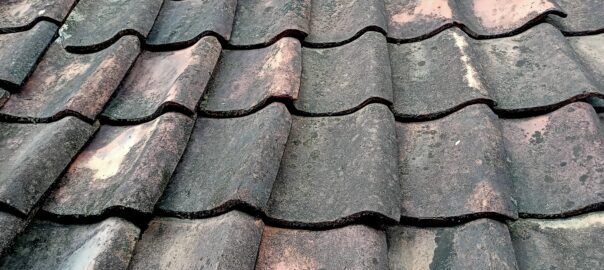For homeowners, spotting roof algae growing as dark streaks or stains is a common problem, especially if they reside in humid climates. While considered an aesthetic issue, letting it grow can result in more drastic issues for your roof. In this blog, you’ll learn the causes and what you should do to prevent this roof algae from growing and causing further damage.
What is Roof Algae?
Gloeocapsa magma, a type of cyanobacteria, is the most common culprit behind those dark streaks. This is an airborne, single-celled organism that breeds in moist environments and feeds on the limestone filler found in asphalt shingles. The multiplication forms the dark, sticky appearance that you think is dirt or mild dew.
What Are The Common Causes of Roof Algae?
The following are the common causes of roof algae:
Moisture and Humidity
As mentioned above, algae need moisture to survive and spread. Therefore, in regions where there is on-and-off rainfall, or roofs that don’t quickly dry, the dark stains consider that moisture as their new home. Apart from this, shade also plays a crucial role as that keeps your roof damp for days.
Shade Of Trees
Is your house surrounded by trees or tall buildings? Then, that will cast a shadow on your roof, stopping the portion from drying out. This dampness creates an ideal atmosphere for algae to grow, and if you also have north-facing roof slopes, be prepared to deal with the problem as these get less direct sunlight.
Limestone Filler
Limestone filler is usually put in modern asphalt shingles. The bacteria feed on the same limestone, offering them a nutrient-packed source to let them breed.
How to Prevent Roof Algae?
The good news is that you can prevent roof algae in the following ways:
Trim Extra Branches
In case there are overhanging branches casting a shadow on your roof, kindly trim them. The cutting will permit maximum sunlight to reach the surface, drying the wet part. On top of that, this also minimizes the quantity of debris that can collect moisture on your roof.
Proper Ventilation
A proper ventilation assists in regulating the temperature of your roof and decreases the quantity of moisture collection underneath the shingles. The circulation of air helps the shingles dry out more rapidly, ending the appeal for algae growing on your surface.
Invest in Algae-Resistant Shingles
You can invest in algae-resistant shingles, too. These are designed with copper granules that are harmful to Gloeocapsa magma, so as rain washes over your roof, a little amount of copper is released, preventing its growth. There are many manufacturers that craft shingles offering warranties against algae, so get one for your roof as well.
Contact Rhode Island Slate Roofing
Are you tired of roof algae? Contact Rhode Island Slate Roofing, and we can help you end this problem and suggest tips as well. Our services extend throughout Rhode Island and we have nearly two decades of experience in the roofing industry. Contact us today at (401) 255-2003.
